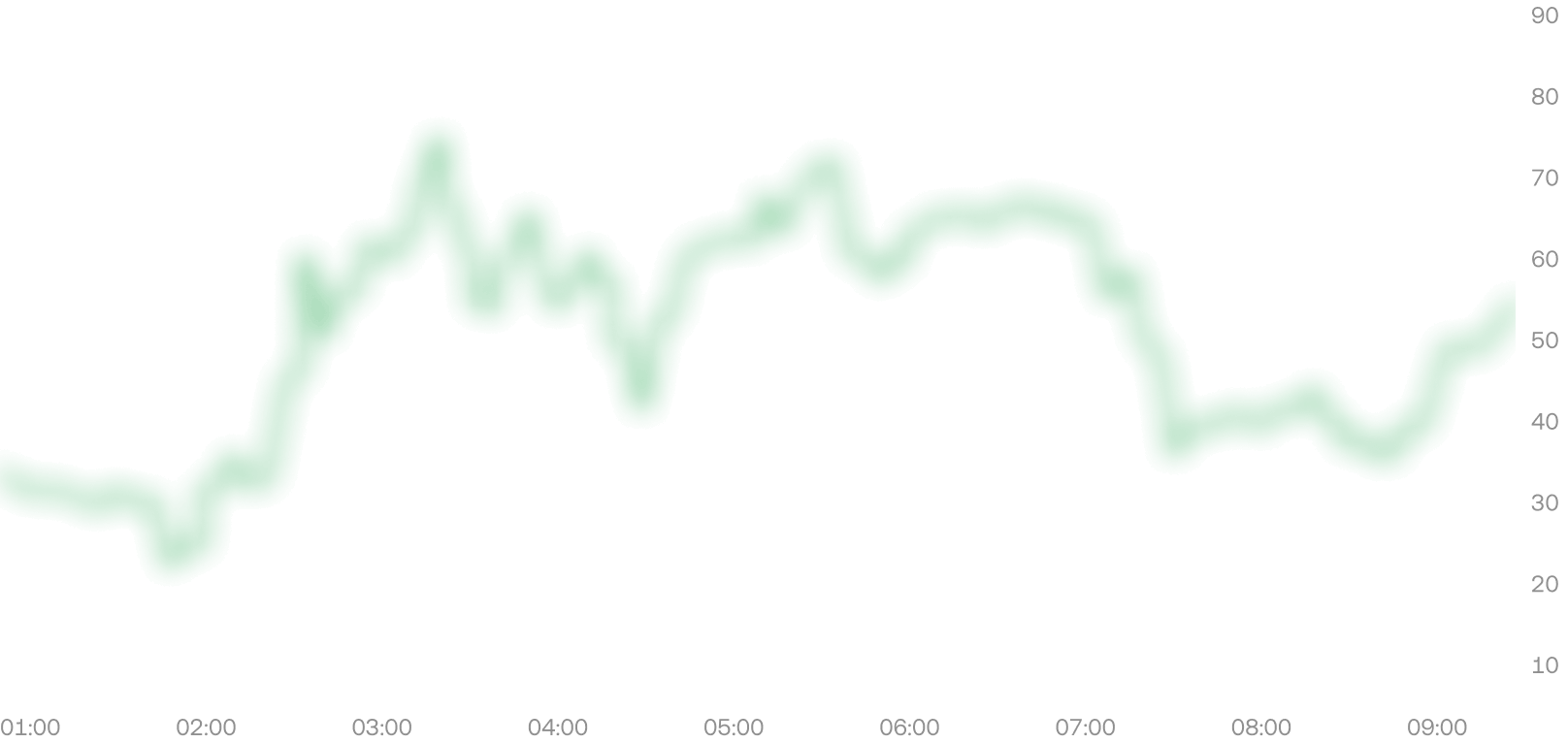Notice: The trading of this cryptocurrency is currently not supported on OKX. Continue trading with cryptocurrencies listed on OKX.

DOG
DOG•GO•TO•THE•MOON price

This data isn’t available yet
You’re a little early to the party. Check out other crypto for now.
DOG•GO•TO•THE•MOON Feed
The following content is sourced from .

"If you care about freedom, privacy, or open markets, that power should make you uncomfortable. The future is not just about who builds digital money. It is about who controls its logic."
Release the Kraken.

Arjun (Octariun) Sethi
The End of Denial: The IMF Finally Admits What Crypto Knew All Along
The world’s financial system just blinked.
When the head of the International Monetary Fund says fiat is going digital and urges countries to accept reality, that is not a policy tweak. It is the moment the establishment admits that the world has already changed. For years, global institutions treated crypto as a novelty or a risk. This week, they acknowledged it as part of the new financial reality.
What we are seeing is the beginning of the end of denial.
Money has always evolved in quiet revolutions. From paper to credit. From wires to APIs. From bank databases to open ledgers. The difference now is speed. Innovation in crypto, stablecoins, and open finance has accelerated faster than any regulatory regime or central bank could process. Governments are no longer setting the pace. They are reacting to a world where networks, not nations, are building the infrastructure of money.
The IMF is trying to frame this transition as something they can manage, as if digital fiat is simply another upgrade or a technical evolution of central banking. But that framing misses the deeper shift happening beneath the surface. The change is not digital. It is architectural. The power to issue and control money is diffusing away from institutions and into open systems that anyone can build on.
This is the real story.
When fiat becomes code, the gatekeepers lose their monopoly on trust.
The New Monetary Architecture
Central bank digital currencies will come, and many of them will work. They will make payments faster, increase traceability, and expand inclusion in theory. But they will also introduce new forms of control. Programmable money means programmable policy. Every transaction becomes a policy instrument. That is a staggering level of power, and an equally staggering level of risk.
If you care about freedom, privacy, or open markets, that power should make you uncomfortable. The future is not just about who builds digital money. It is about who controls its logic.
The next great economic divide will not be between countries that have central bank digital currencies and those that do not. It will be between societies that build open digital systems that are interoperable, composable, and privacy preserving, and those that lock digital money into centralized databases with surveillance built in.
Traditional finance is already feeling this tension. For decades, financial institutions could rely on a simple edge: regulation, custody, and distribution. That edge is eroding. As soon as users can hold sovereign digital cash directly, banks lose their monopoly on deposits. When stablecoins can move value across borders in seconds, the concept of international wire sounds like a relic. And when decentralized finance protocols can price, lend, and settle programmatically, the economic role of the bank as middleman starts to look optional.
The incumbents will fight this, of course. They will talk about compliance, safety, and systemic risk, all of which are valid concerns. But the deeper reason for their resistance is that they sense what comes next: a world where financial intermediation is an algorithmic choice, not a legal privilege.
From Institutions to Networks
We are witnessing the separation of money and state, not through ideology but through infrastructure.
For most of modern history, the state defined the rails of money. Now, networks do. Ethereum, Solana, Avalanche, Bitcoin. These are not currencies in the narrow sense. They are new jurisdictions of trust. They are opt in economies. Anyone can enter. No one can monopolize access.
That is what the IMF is really reacting to. Not the existence of digital money, but the emergence of digital sovereignty that does not flow through them.
This is also why meme coins matter more than their critics admit. They may look like jokes, like $DOGE, $DOG, or $MIM, but they are social experiments in value consensus. They demonstrate how money can form bottom up, through culture and community rather than decree. When millions of people agree that a meme token has value and it trades globally with liquidity and demand, something profound is happening. Belief has decoupled from authority.
Meme coins show how finance becomes culture and culture becomes finance. In that sense, they are not absurd. They are early.
In traditional markets, value follows fundamentals. In digital markets, fundamentals follow networks. The memes come first. The infrastructure catches up.
When the IMF looks at DOGE, they see volatility. What they should see is coordination. A new way for communities to express collective value at internet speed. In the same way that early social media turned users into publishers, meme coins turn communities into monetary networks. It is messy, irrational, and often speculative, but it is also real, and it is growing.
The State Versus The Network
Every era of money has a political philosophy embedded in it. Gold represented scarcity and sovereignty. Fiat represented the power of the state. Digital money represents the power of code and coordination.
The next twenty years will be defined by how these forces reconcile.
Central banks will issue digital currencies to preserve control. Private institutions will tokenize assets to preserve relevance. And open systems, the world of crypto, decentralized finance, and community driven projects, will keep pushing the boundaries of what is possible.
The future will not be one system replacing another. It will be a negotiation between closed systems that optimize for control and open systems that optimize for freedom.
In practice, that means the global financial system will look more like the internet: messy, modular, multi polar, and open at the edges. Nations that embrace that complexity will thrive. Those that resist it will fall behind.
Just as the internet rewarded openness over gatekeeping, the new financial order will reward interoperability over control. Money wants to flow the way information does: freely, instantly, and globally. Every attempt to contain it will eventually fail.
Why This Moment Matters
The IMF’s statement is not revolutionary by itself. What makes it historic is the subtext: the establishment is admitting that digital money is no longer a question of if, but how.
That changes everything.
It forces countries to ask new questions.
How do we maintain monetary sovereignty when value moves across networks faster than we can regulate it?
How do we design digital money that respects privacy, transparency, and freedom at the same time?
How do we compete when capital flows to the most efficient and open systems?
These are existential questions. They will define which countries lead the next era of economic growth and which fade into irrelevance.
For investors and builders, the message is clear: the rails are being rebuilt. This is not the time to chase short term tokens. It is the time to build infrastructure, governance, and identity layers that make digital finance scalable and trustworthy. The opportunity is not in predicting which meme coin pumps next. It is in building the middleware that allows trillions of dollars to move safely across open rails.
The Path Forward
Governments need to learn from the internet’s evolution. Openness did not destroy control. It redefined it. The nations that created flexible, innovation friendly frameworks became the economic hubs of the twenty first century. The same pattern will repeat with digital money.
We need a design philosophy for money that acknowledges the reality of open systems. It should combine the stability and legal clarity of sovereign fiat with the innovation and inclusivity of crypto networks. It should enable composability without losing accountability, privacy without lawlessness, and programmability without political capture.
The countries that understand this will attract talent, capital, and legitimacy. The ones that cling to control will watch as liquidity and influence migrate elsewhere.
The Cultural Layer
Money has always been cultural, but crypto made that explicit. The meme coins, NFTs, and on chain communities that seem unserious to regulators are actually pioneering the social foundations of a new economy.
They are teaching people that value is something we can create together, not something handed down by authority. They are teaching us that financial participation can be joyful, creative, and collective.
The IMF’s recognition of digital currencies is, in a way, an acknowledgment of that cultural victory. Institutions do not move this fast unless they have to. And now, they have to.
The Future of Money Is Open
When history looks back at this decade, it will see a clear turning point, the moment the institutions of the old world quietly conceded that the new one had already arrived.
The question now is whether we will build digital money as an extension of the surveillance state or as a platform for open innovation.
I believe the open path will win because open systems compound. They attract talent, energy, and trust. They grow like the internet, bottom up, unpredictable, unstoppable.
Crypto is not just a new asset class. It is a new social contract. And now that even the IMF has acknowledged the shift, the real work begins: designing a financial system that deserves the trust it is about to inherit.

The End of Denial: The IMF Finally Admits What Crypto Knew All Along
The world’s financial system just blinked.
When the head of the International Monetary Fund says fiat is going digital and urges countries to accept reality, that is not a policy tweak. It is the moment the establishment admits that the world has already changed. For years, global institutions treated crypto as a novelty or a risk. This week, they acknowledged it as part of the new financial reality.
What we are seeing is the beginning of the end of denial.
Money has always evolved in quiet revolutions. From paper to credit. From wires to APIs. From bank databases to open ledgers. The difference now is speed. Innovation in crypto, stablecoins, and open finance has accelerated faster than any regulatory regime or central bank could process. Governments are no longer setting the pace. They are reacting to a world where networks, not nations, are building the infrastructure of money.
The IMF is trying to frame this transition as something they can manage, as if digital fiat is simply another upgrade or a technical evolution of central banking. But that framing misses the deeper shift happening beneath the surface. The change is not digital. It is architectural. The power to issue and control money is diffusing away from institutions and into open systems that anyone can build on.
This is the real story.
When fiat becomes code, the gatekeepers lose their monopoly on trust.
The New Monetary Architecture
Central bank digital currencies will come, and many of them will work. They will make payments faster, increase traceability, and expand inclusion in theory. But they will also introduce new forms of control. Programmable money means programmable policy. Every transaction becomes a policy instrument. That is a staggering level of power, and an equally staggering level of risk.
If you care about freedom, privacy, or open markets, that power should make you uncomfortable. The future is not just about who builds digital money. It is about who controls its logic.
The next great economic divide will not be between countries that have central bank digital currencies and those that do not. It will be between societies that build open digital systems that are interoperable, composable, and privacy preserving, and those that lock digital money into centralized databases with surveillance built in.
Traditional finance is already feeling this tension. For decades, financial institutions could rely on a simple edge: regulation, custody, and distribution. That edge is eroding. As soon as users can hold sovereign digital cash directly, banks lose their monopoly on deposits. When stablecoins can move value across borders in seconds, the concept of international wire sounds like a relic. And when decentralized finance protocols can price, lend, and settle programmatically, the economic role of the bank as middleman starts to look optional.
The incumbents will fight this, of course. They will talk about compliance, safety, and systemic risk, all of which are valid concerns. But the deeper reason for their resistance is that they sense what comes next: a world where financial intermediation is an algorithmic choice, not a legal privilege.
From Institutions to Networks
We are witnessing the separation of money and state, not through ideology but through infrastructure.
For most of modern history, the state defined the rails of money. Now, networks do. Ethereum, Solana, Avalanche, Bitcoin. These are not currencies in the narrow sense. They are new jurisdictions of trust. They are opt in economies. Anyone can enter. No one can monopolize access.
That is what the IMF is really reacting to. Not the existence of digital money, but the emergence of digital sovereignty that does not flow through them.
This is also why meme coins matter more than their critics admit. They may look like jokes, like $DOGE, $DOG, or $MIM, but they are social experiments in value consensus. They demonstrate how money can form bottom up, through culture and community rather than decree. When millions of people agree that a meme token has value and it trades globally with liquidity and demand, something profound is happening. Belief has decoupled from authority.
Meme coins show how finance becomes culture and culture becomes finance. In that sense, they are not absurd. They are early.
In traditional markets, value follows fundamentals. In digital markets, fundamentals follow networks. The memes come first. The infrastructure catches up.
When the IMF looks at DOGE, they see volatility. What they should see is coordination. A new way for communities to express collective value at internet speed. In the same way that early social media turned users into publishers, meme coins turn communities into monetary networks. It is messy, irrational, and often speculative, but it is also real, and it is growing.
The State Versus The Network
Every era of money has a political philosophy embedded in it. Gold represented scarcity and sovereignty. Fiat represented the power of the state. Digital money represents the power of code and coordination.
The next twenty years will be defined by how these forces reconcile.
Central banks will issue digital currencies to preserve control. Private institutions will tokenize assets to preserve relevance. And open systems, the world of crypto, decentralized finance, and community driven projects, will keep pushing the boundaries of what is possible.
The future will not be one system replacing another. It will be a negotiation between closed systems that optimize for control and open systems that optimize for freedom.
In practice, that means the global financial system will look more like the internet: messy, modular, multi polar, and open at the edges. Nations that embrace that complexity will thrive. Those that resist it will fall behind.
Just as the internet rewarded openness over gatekeeping, the new financial order will reward interoperability over control. Money wants to flow the way information does: freely, instantly, and globally. Every attempt to contain it will eventually fail.
Why This Moment Matters
The IMF’s statement is not revolutionary by itself. What makes it historic is the subtext: the establishment is admitting that digital money is no longer a question of if, but how.
That changes everything.
It forces countries to ask new questions.
How do we maintain monetary sovereignty when value moves across networks faster than we can regulate it?
How do we design digital money that respects privacy, transparency, and freedom at the same time?
How do we compete when capital flows to the most efficient and open systems?
These are existential questions. They will define which countries lead the next era of economic growth and which fade into irrelevance.
For investors and builders, the message is clear: the rails are being rebuilt. This is not the time to chase short term tokens. It is the time to build infrastructure, governance, and identity layers that make digital finance scalable and trustworthy. The opportunity is not in predicting which meme coin pumps next. It is in building the middleware that allows trillions of dollars to move safely across open rails.
The Path Forward
Governments need to learn from the internet’s evolution. Openness did not destroy control. It redefined it. The nations that created flexible, innovation friendly frameworks became the economic hubs of the twenty first century. The same pattern will repeat with digital money.
We need a design philosophy for money that acknowledges the reality of open systems. It should combine the stability and legal clarity of sovereign fiat with the innovation and inclusivity of crypto networks. It should enable composability without losing accountability, privacy without lawlessness, and programmability without political capture.
The countries that understand this will attract talent, capital, and legitimacy. The ones that cling to control will watch as liquidity and influence migrate elsewhere.
The Cultural Layer
Money has always been cultural, but crypto made that explicit. The meme coins, NFTs, and on chain communities that seem unserious to regulators are actually pioneering the social foundations of a new economy.
They are teaching people that value is something we can create together, not something handed down by authority. They are teaching us that financial participation can be joyful, creative, and collective.
The IMF’s recognition of digital currencies is, in a way, an acknowledgment of that cultural victory. Institutions do not move this fast unless they have to. And now, they have to.
The Future of Money Is Open
When history looks back at this decade, it will see a clear turning point, the moment the institutions of the old world quietly conceded that the new one had already arrived.
The question now is whether we will build digital money as an extension of the surveillance state or as a platform for open innovation.
I believe the open path will win because open systems compound. They attract talent, energy, and trust. They grow like the internet, bottom up, unpredictable, unstoppable.
Crypto is not just a new asset class. It is a new social contract. And now that even the IMF has acknowledged the shift, the real work begins: designing a financial system that deserves the trust it is about to inherit.
About DOG•GO•TO•THE•MOON (DOG)
DOG•GO•TO•THE•MOON FAQ
What is cryptocurrency?
Cryptocurrencies, such as DOG, are digital assets that operate on a public ledger called blockchains. Learn more about coins and tokens offered on OKX and their different attributes, which includes live prices and real-time charts.
When was cryptocurrency invented?
Thanks to the 2008 financial crisis, interest in decentralized finance boomed. Bitcoin offered a novel solution by being a secure digital asset on a decentralized network. Since then, many other tokens such as DOG have been created as well.
Can I buy DOG on OKX?
No, currently DOG is unavailable on OKX. To stay updated on when DOG becomes available, sign up for notifications or follow us on social media. We’ll announce new cryptocurrency additions as soon as they’re listed.
Why does the price of DOG fluctuate?
The price of DOG fluctuates due to the global supply and demand dynamics typical of cryptocurrencies. Its short-term volatility can be attributed to significant shifts in these market forces.
Monitor crypto prices on an exchange
Watch this video to learn about what happens when you move your money to a crypto exchange.
Disclaimer
The social content on this page ("Content"), including but not limited to tweets and statistics provided by LunarCrush, is sourced from third parties and provided "as is" for informational purposes only. OKX does not guarantee the quality or accuracy of the Content, and the Content does not represent the views of OKX. It is not intended to provide (i) investment advice or recommendation; (ii) an offer or solicitation to buy, sell or hold digital assets; or (iii) financial, accounting, legal or tax advice. Digital assets, including stablecoins and NFTs, involve a high degree of risk, can fluctuate greatly. The price and performance of the digital assets are not guaranteed and may change without notice.
OKX does not provide investment or asset recommendations. You should carefully consider whether trading or holding digital assets is suitable for you in light of your financial condition. Please consult your legal/tax/investment professional for questions about your specific circumstances. For further details, please refer to our Terms of Use and Risk Warning. By using the third-party website ("TPW"), you accept that any use of the TPW will be subject to and governed by the terms of the TPW. Unless expressly stated in writing, OKX and its affiliates (“OKX”) are not in any way associated with the owner or operator of the TPW. You agree that OKX is not responsible or liable for any loss, damage and any other consequences arising from your use of the TPW. Please be aware that using a TPW may result in a loss or diminution of your assets. Product may not be available in all jurisdictions.
OKX does not provide investment or asset recommendations. You should carefully consider whether trading or holding digital assets is suitable for you in light of your financial condition. Please consult your legal/tax/investment professional for questions about your specific circumstances. For further details, please refer to our Terms of Use and Risk Warning. By using the third-party website ("TPW"), you accept that any use of the TPW will be subject to and governed by the terms of the TPW. Unless expressly stated in writing, OKX and its affiliates (“OKX”) are not in any way associated with the owner or operator of the TPW. You agree that OKX is not responsible or liable for any loss, damage and any other consequences arising from your use of the TPW. Please be aware that using a TPW may result in a loss or diminution of your assets. Product may not be available in all jurisdictions.









Socials